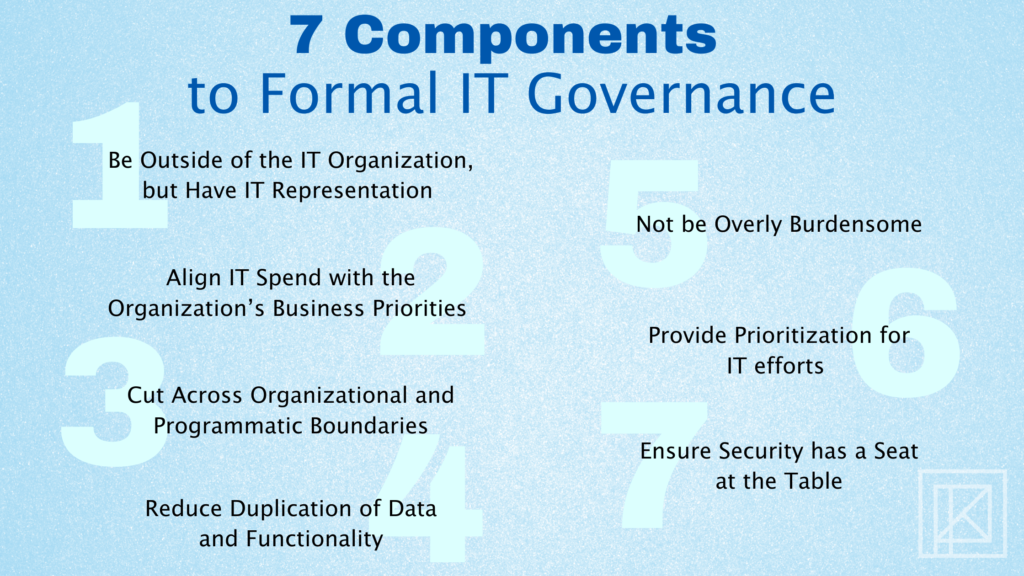IT should exist to help an organization serve its clients—IT Governance exists whether it is formalized or not.

What is Formalized IT Governance?
Formalized IT Governance is the framework and processes established to manage all IT resources, both money and staff, to align resource expenditures with an organization’s goals. In doing so, it ensures IT efforts are prioritizing the most pressing problems first.
Why is IT Governance Important?
Without formalized governance processes, IT efforts usually end up funneled towards the largest fire, whoever has funding, or whoever yells the loudest. Whether because of organizational boundaries, funding rules, or other causes, this has resulted in numerous systems that only serve the program that created them and don’t share information.
These systems have resulted in redundant functionality, capturing the same data on the same individuals because they interact with more than one agency, or receive the benefits from more than one program.
We all know that there are never enough funds, hardware, or people to do all the “cool” IT things that the business wants to improve the client experience or make program staff more efficient.
Seven Components to Formal IT Governance
Be Outside of the IT Organization, but Have IT Representation
Remove the “IT” from running IT Governance, as it fundamentally must be driven by the business. But it is imperative to include IT representation to give voice and ensure the systems supporting the business are kept up to date, secure, and aligned with all other systems that support business directly.
Align IT Spend with the Organization’s Business Priorities
Given the limited funding for IT projects and the availability of IT staff resources, the organization must identify what the business’ priorities are and communicate them to IT and all parties involved.
Cut Across Organizational and Programmatic Boundaries
IT is a shared service—every part of the organization is supported by IT and needs to be considered when prioritizing IT efforts.
Reduce Duplication of Data and Functionality
Duplication of data results in waste; this occurs when staff or customers must enter or maintain data in multiple locations or lose productivity because of inaccurate information in one system or another. In the same vein, duplication of functionality results in increased costs to purchase and maintain multiple systems that do the same thing.
Not be Overly Burdensome
If the process is too burdensome, people will find ways to get around it. This can look like going to a friend in IT, purchasing software outside of the process, or developing solutions using owned but not supported software.
Provide Prioritization for IT efforts
Without prioritization, IT staff will work on those tasks they find most interesting or that their friends need most rather than what the business deems most important.
Ensure Security has a Seat at the Table
When establishing IT governance, it is crucial to embed security best practices into the solution design, instead of an afterthought at the end of the process.
PK Can Help You Implement IT Governance in Your Organization
Whether you’re at the beginning stages of implementing formal IT Governance into your organization or need help knowing where to start, Public Knowledge® is here to be of assistance every step of the way.